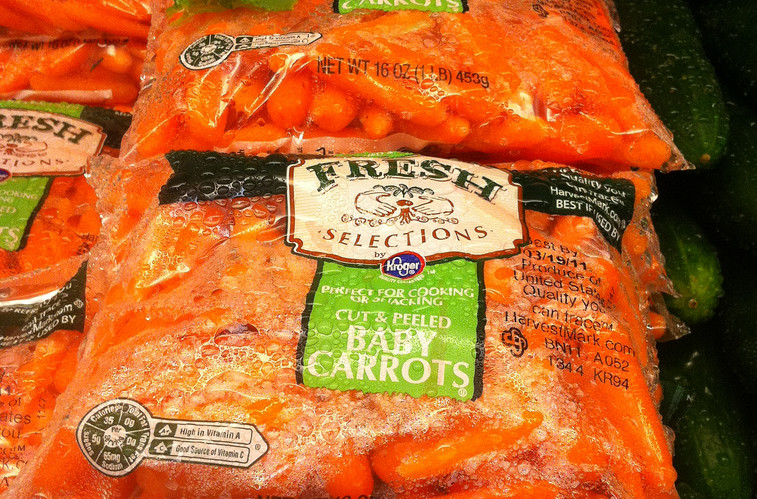How The Baby Carrot Came To Be And They Are Not Actually Baby Carrots

When it comes to choosing carrots from the grocery store, many people opt for baby carrots over their jumbo counterparts. They’re easy to transport around, they’re fun to dip into ranch and they can even be easier to eat.
And if you love baby carrots, you aren’t alone: baby carrots make up 70 percent of carrot sales, according to the Washington Post.
The baby carrot is one of the biggest innovations in the history of the vegetable industry and has an interesting start. Basically, the carrot business was struggling in the 1980s. Farmers were finding that a lot of their carrots were being tossed away because supermarkets were not buying them (grocers didn’t want to buy “ugly” looking ones).
But a creative farmer named Mike Yurosek hatched a genius idea on what to do with all these leftover carrots so he didn’t have toss them.
He started using a potato peeler and re-shaped the carrots into something more pleasant to the eye. Unfortunately, that process took a bit too long and so he went out and bought an industrial green-bean cutter. The machine cut the carrots into perfect 2-inch pieces (the classic baby carrot size we are familiar with today).
Recounting the story in an interview with USA Today, he dropped the smaller carrots off at a local grocery store. “Next day they called and said, ‘We only want those.’ ”
Yurosek was onto something. In one year, carrot consumption increased by 30% and it’s been growing every since.
The other thing to note about baby carrots is that aren’t baby carrots. Meaning that aren’t just a mini-version of carrots grown. They are regular old-fashioned carrots that are cut, sliced, and sculpted into smaller perfect mini carrots.
David Just, a professor of behavioral economics at Cornell who studies consumer food choices told the Washington Post, “There are so many people who honestly believe there are baby carrot farmers out there who grow these baby carrots that pop out of the ground and are perfectly convenient and smooth.
Regardless, the marketing around “baby carrots” worked, and people love their snack sized carrots.
Here’s a video of how they are actually made:
Another tidbit you may not know is that these carrots are dipped into a chlorinated bath to help prevent the risk of food-borne illness. According to the Water Quality and Health Council, the levels of chlorine have been deemed safe and this type of bath is considered a common practice for pre-sliced vegetables.
Photo by Francis Storr


